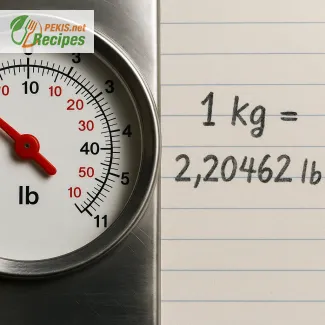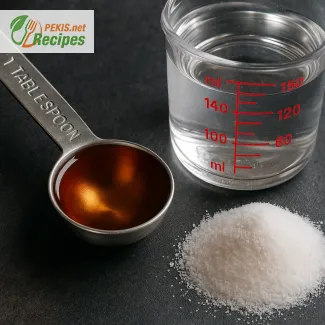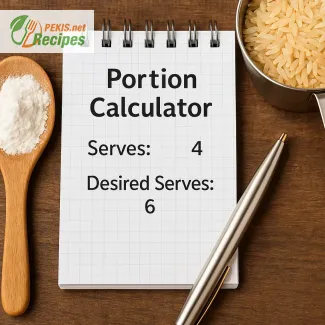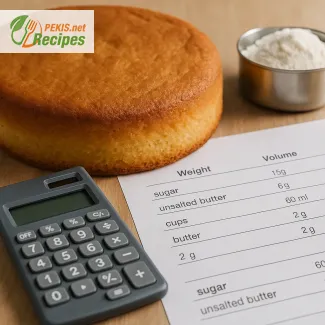
Understand how to convert 40 pounds to kilograms the easy way
A clear weight conversion example for shopping, cooking or fitness
Converting 40 lbs to kg can sound simple at first glance, but when precision matters—whether you're ordering meat online, adjusting a recipe, or tracking fitness goals—it's crucial to understand the correct method and implications behind this conversion. This article is designed to help home cooks, athletes, travelers, and online shoppers alike get an accurate answer without relying on confusing or outdated tools. Let's break it down in plain English with examples you can relate to, not formulas that feel like homework.
Why converting pounds to kilograms still causes confusion
Although the world has largely adopted the metric system, the United States and a few other regions still rely heavily on pounds (lbs) when describing body weight, food quantities, or shipping weights. On the other hand, much of Europe, Asia, and Latin America use kilograms (kg). This difference can lead to confusion, especially when interpreting product labels, fitness apps, or international recipes.
For example, a label on a U.S. food product might say "Net weight: 40 lbs." For someone used to buying in kilograms, that number feels abstract. How much is that in familiar terms? Is it suitable for a family dinner, a group barbecue, or just bulk storage? To answer that, we need to convert 40 pounds into kilograms in a way that makes sense contextually.
The exact formula to convert 40 lbs to kg
The formula for converting pounds to kilograms is straightforward:
1 pound = 0.453592 kilograms
So, to convert 40 lbs to kg, simply multiply:
40 × 0.453592 = 18.1437 kg
This means that 40 pounds is equal to 18.14 kilograms (rounded to two decimal places). While this might sound like a lot or a little depending on context, we'll cover how this weight translates into real-world scenarios.
Common contexts where 40 lbs equals 18.14 kg matters
Grocery shopping and bulk food quantities
When you're buying in bulk—say, meat for a large gathering or ingredients for a professional kitchen—40 lbs of chicken or rice might be listed in imperial units, especially in U.S.-based online stores. Knowing it equals just over 18 kg can help you mentally compare prices or determine whether it fits your storage space.
For example, a bag of 40 lbs of potatoes would fill the bottom shelf of a standard refrigerator or pantry bin. If a recipe calls for 2 kg of flour, and you purchase a 40 lb (18.14 kg) sack, you're getting enough for over nine full recipes.
Fitness and weight training
Weights and barbells in the gym—particularly in the U.S.—are often listed in pounds. If you're training with a 40 lb dumbbell, understanding that it weighs just over 18 kilograms can help you communicate your regimen with a coach abroad or compare equipment internationally.
Traveling and baggage weight
Airlines often specify baggage limits in kg, but U.S. travelers still think in lbs. If your suitcase weighs 40 lbs, you might wonder: will it pass the 20 kg limit? The answer is yes—40 lbs is 18.14 kg, so you're still safe, though not by much. This is especially relevant if you're carrying gifts or heavy gear.
Is 40 lbs a common reference point?
Absolutely. From gym weights to small appliances, 40 lbs comes up often. Here are a few everyday examples that help visualize it:
- A medium-sized microwave oven weighs about 40 lbs
- A 5-gallon (roughly 18.9-liter) container of water weighs close to 40 lbs
- A small dog breed like a Cocker Spaniel often weighs between 30–40 lbs
Understanding these comparisons makes the metric value more intuitive. 18.14 kg is no longer just a number—it becomes a tangible weight you can picture or feel.
Should you round the conversion?
When precision matters
If you're baking, especially in large batches, or dealing with scientific or pharmaceutical quantities, it's important to keep the number precise—18.1437 kg. Many kitchen scales today display measurements to the hundredth of a gram, making such precision easy to achieve.
When approximation is fine
In daily conversations, fitness planning, or estimating grocery weight, rounding to 18.1 kg is more than acceptable. Most packaging and recipe books round to the nearest tenth anyway.
Converting other pound values quickly
Once you understand the multiplier (1 lb = 0.453592 kg), you can estimate other common values easily:
- 10 lbs = 4.54 kg
- 20 lbs = 9.07 kg
- 30 lbs = 13.61 kg
- 40 lbs = 18.14 kg
- 50 lbs = 22.68 kg
This kind of quick reference is useful if you're comparing product sizes or scaling up a recipe by doubling or tripling amounts.
Clarity over confusion
When you see “40 lbs” on a package, in a workout plan, or in a shipping policy, you shouldn’t have to guess what that means. With one simple calculation, you now know that 40 lbs equals 18.14 kg.
For many people, the confusion between metric and imperial systems is a constant annoyance. But with a few easy rules and memorable figures, you can confidently convert weights and make better decisions—whether you're shopping for a dinner party, prepping for a fitness challenge, or checking your luggage weight.
No matter where you live or what you're preparing for, understanding conversions like 40 lbs to kg gives you clarity, confidence, and control.



